Ambrotype Object View
Ambrotypes are a variation of the wet collodion process. Collodion can be applied to a variety of supports including leather and metal. Other cased objects typically have metal supports. Ambrotypes have a glass support of either clear or colored glass.
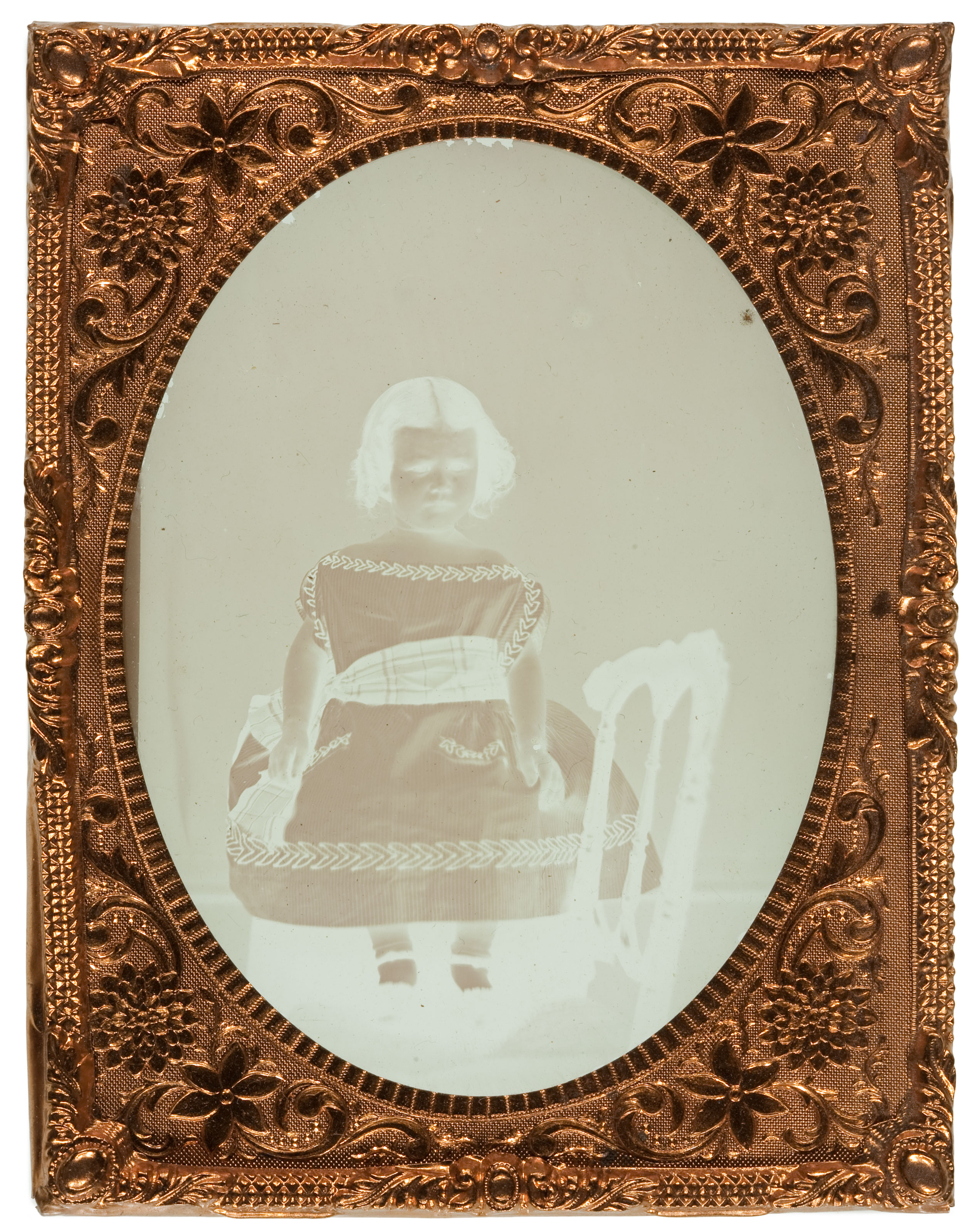
Some ambrotypes have a clear glass support. This object has been removed from its case and is without a black backing. Notice the image appears as a negative without the dark backing.
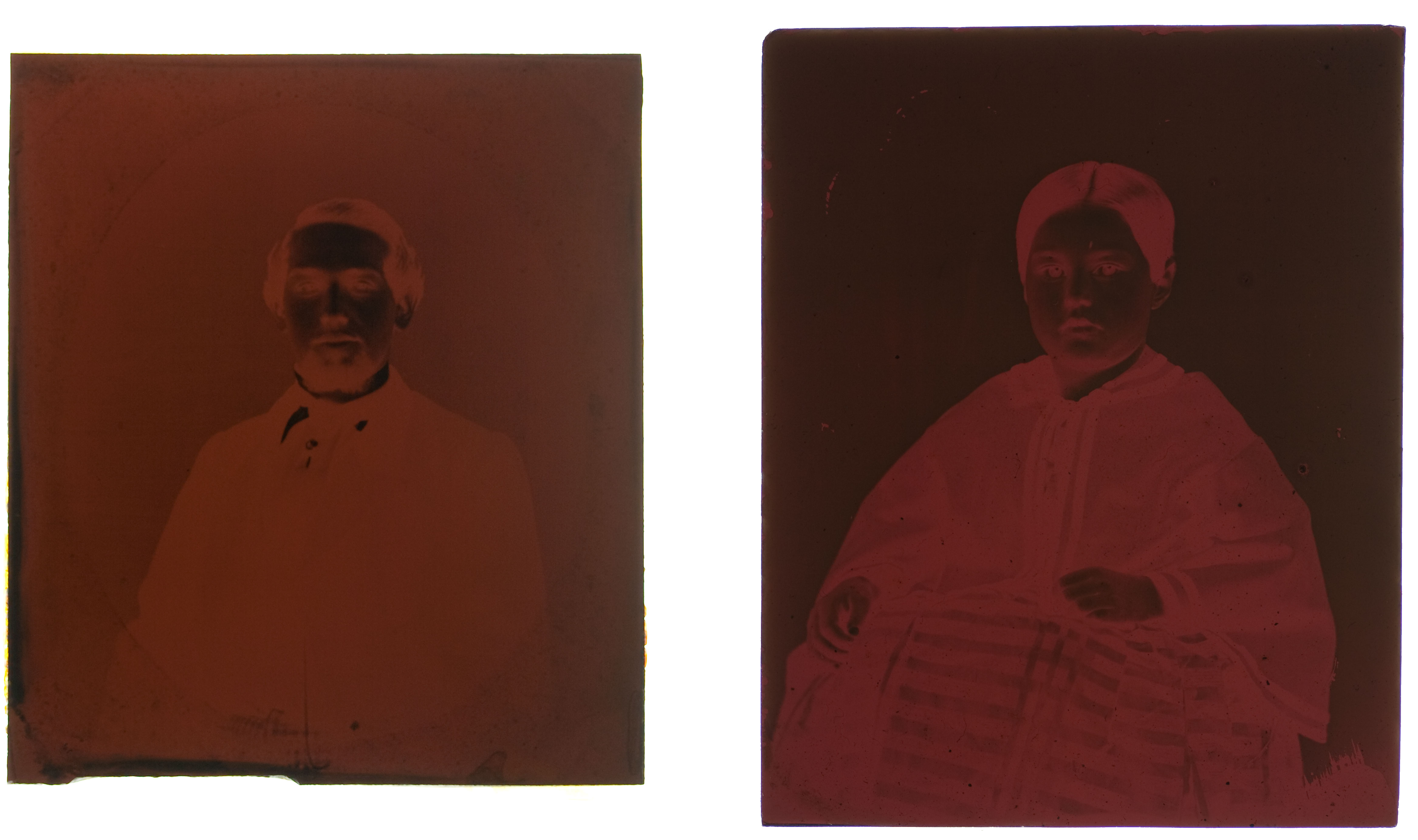
Called ruby ambrotypes, these objects created with red glass have been removed from their cases.
Ambrotypes are characterized by their milky-white image highlights. The ambrotype is technically an underexposed negative that appears as a positive when placed against a dark background. During exposure, a latent image is formed and made visible during development in a chemical solution of silver nitrate and nitric or acetic acid. The milky quality of the highlights may be attributed to the size and shape of the silver particles formed during development in combination with the contrast of the black background on which the image is viewed. Uncased ambrotypes may have bluish or whitish lines along the edges called pour lines. To coat the plate, the photographer poured collodion onto the glass and manipulated it so that it flowed evenly over the entire surface and then poured it back into a container. The collodion would gather and become thicker along the edges and corner where it was poured off.
Ambrotypes made using James Ambrose Cutting’s sealing patent, which consists of Canada balsam, will sometimes exhibit fern-like patterns that result from the balsam separating from the glass support, and may have greenish-yellow discoloration of the resin.
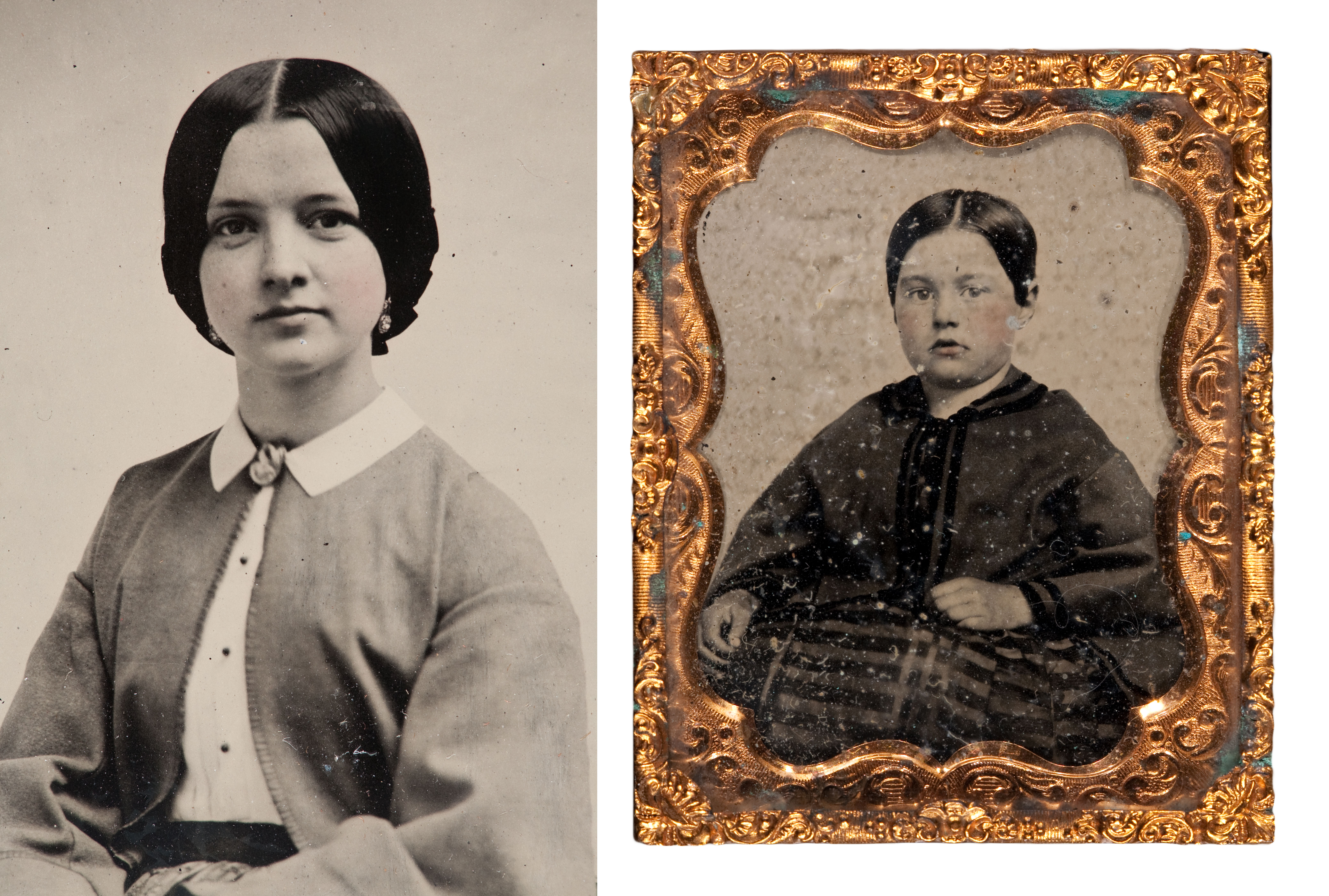
Ambrotypes have milky-white highlights.
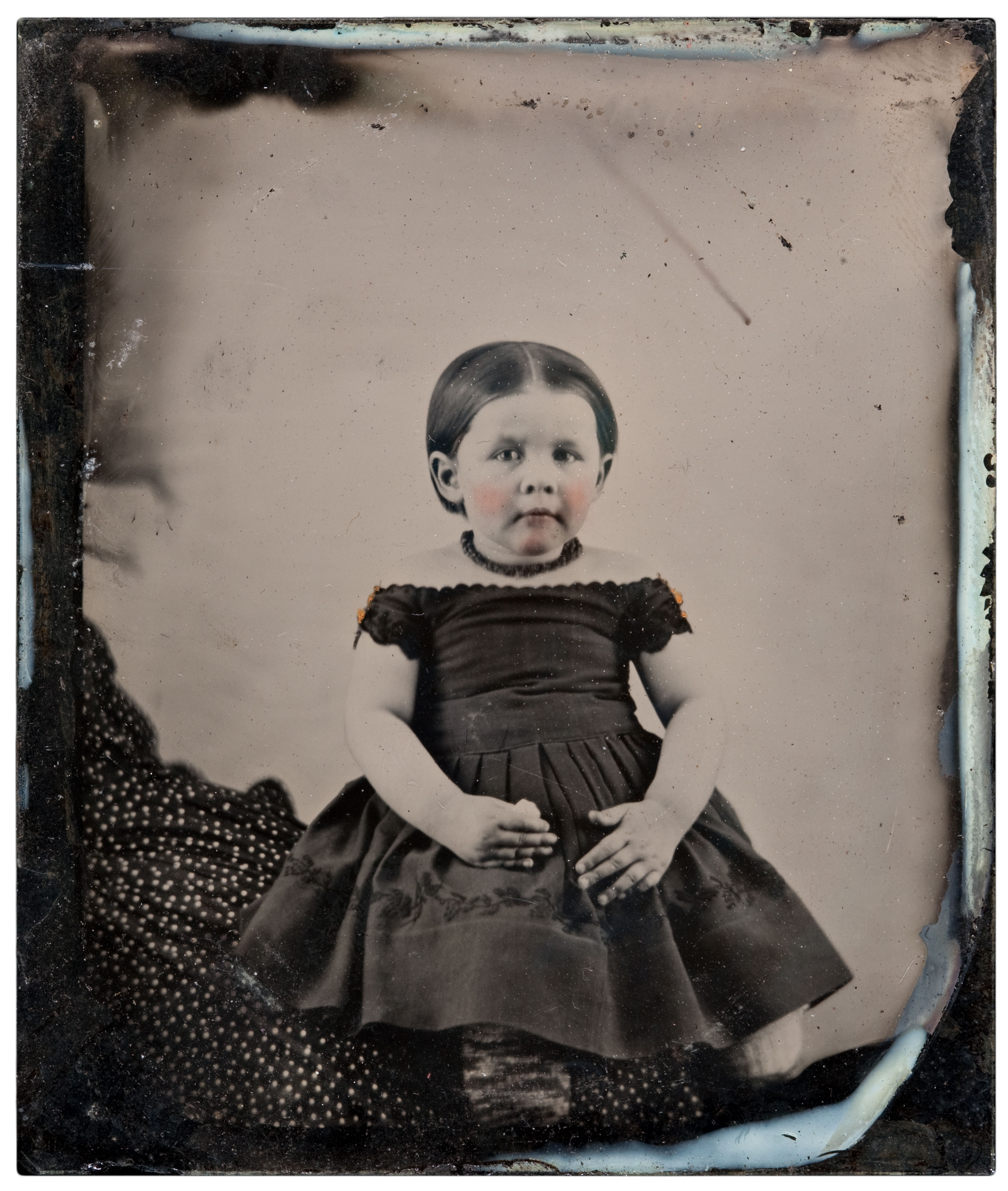
Pour lines are almost always covered by the preserver and mat and therefore not usually visible. This plate has been removed from its case to show the pour lines along the edges. Pour lines are bluish or whitish and are usually along the top and right edges of the plate or appear just as a bluish or whitish spot at the corner.
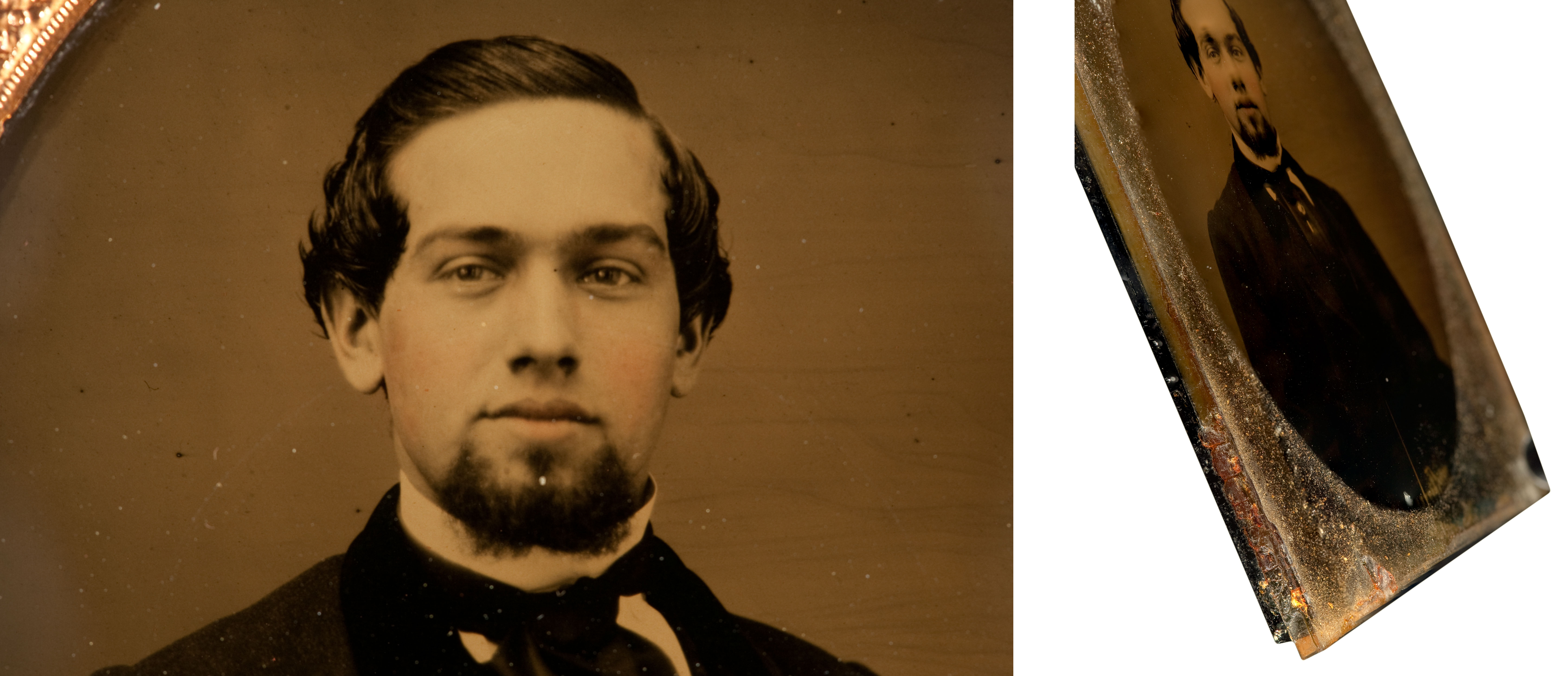
- Whole plate: 6 1/2" x 8 1/2"
- Half-plate: 4 1/4" x 5 1/2"
- Quarter-plate: 3 1/4" x 4 1/4"
- Sixth-plate: 2 3/4" x 3 1/4"
- Ninth-plate: 2" x 2 1/2"
- Sixteenth-plate: 1 3/8" x 1 5/8"
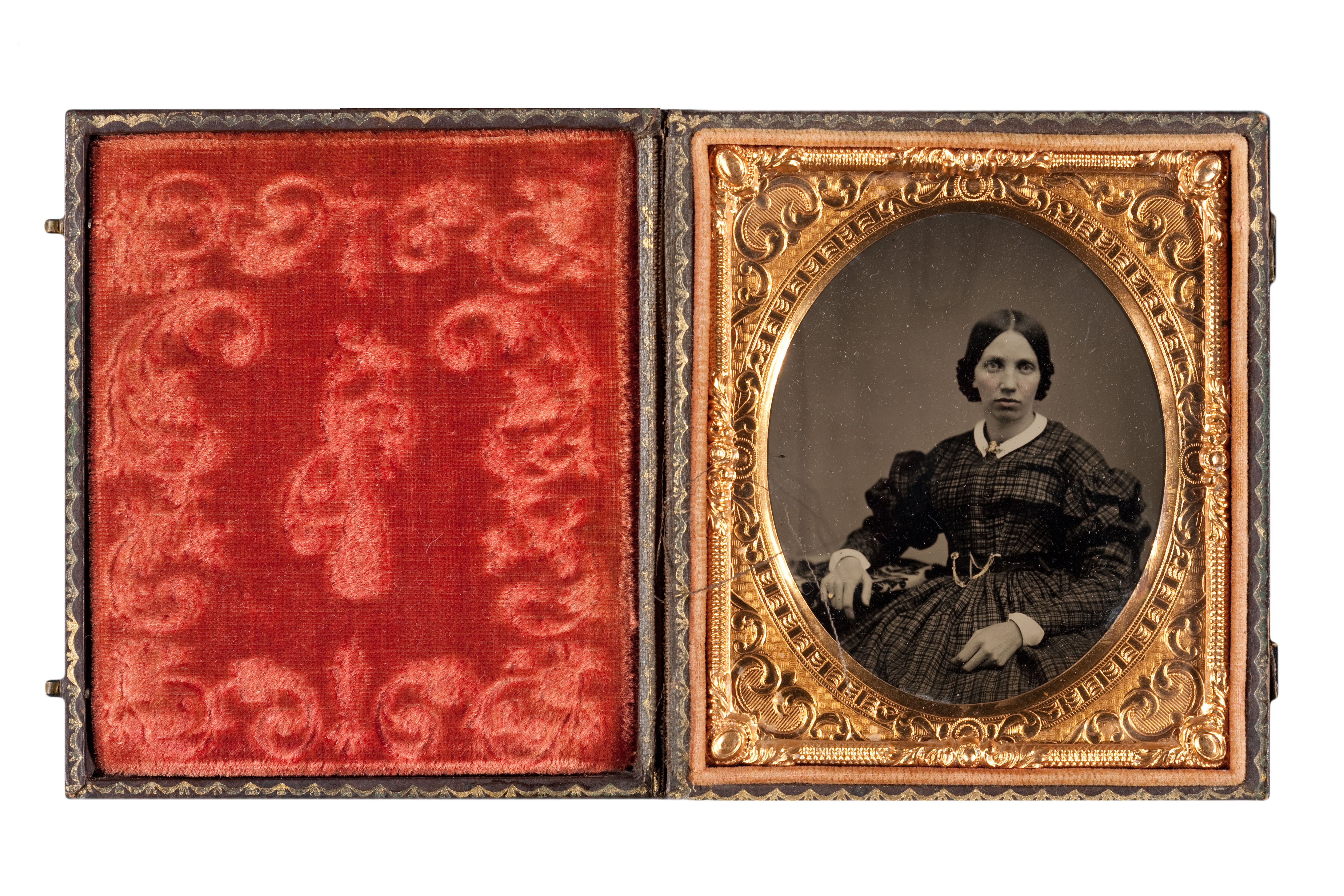
Case Interior. The tray holding the image package is on the right and the lid with a velvet pad is on the left.
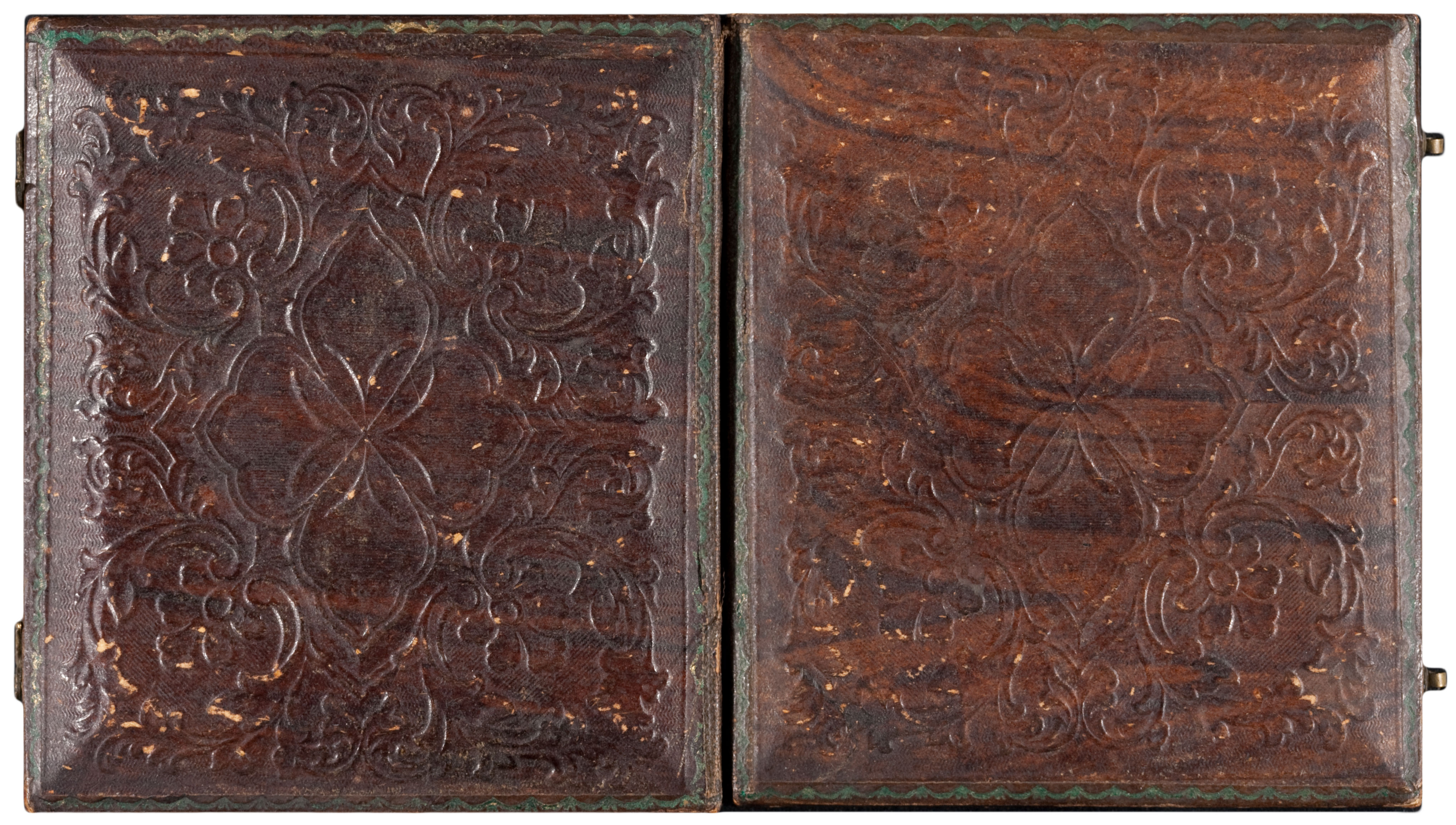
Case Exterior. This case is composed of wood covered in molded paper.
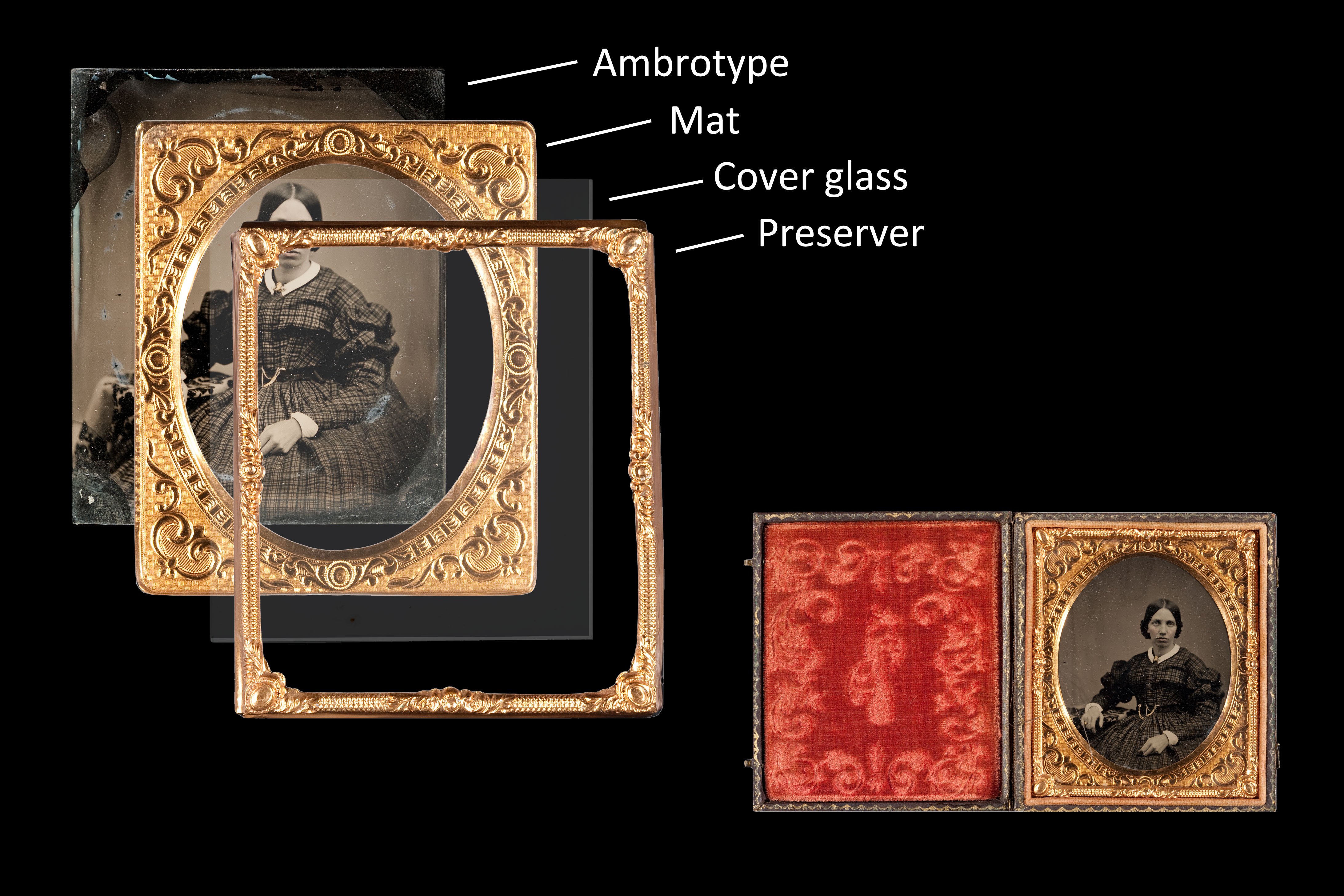
The components of the cased object include a brass preserver, cover glass, brass mat, and the image plate.
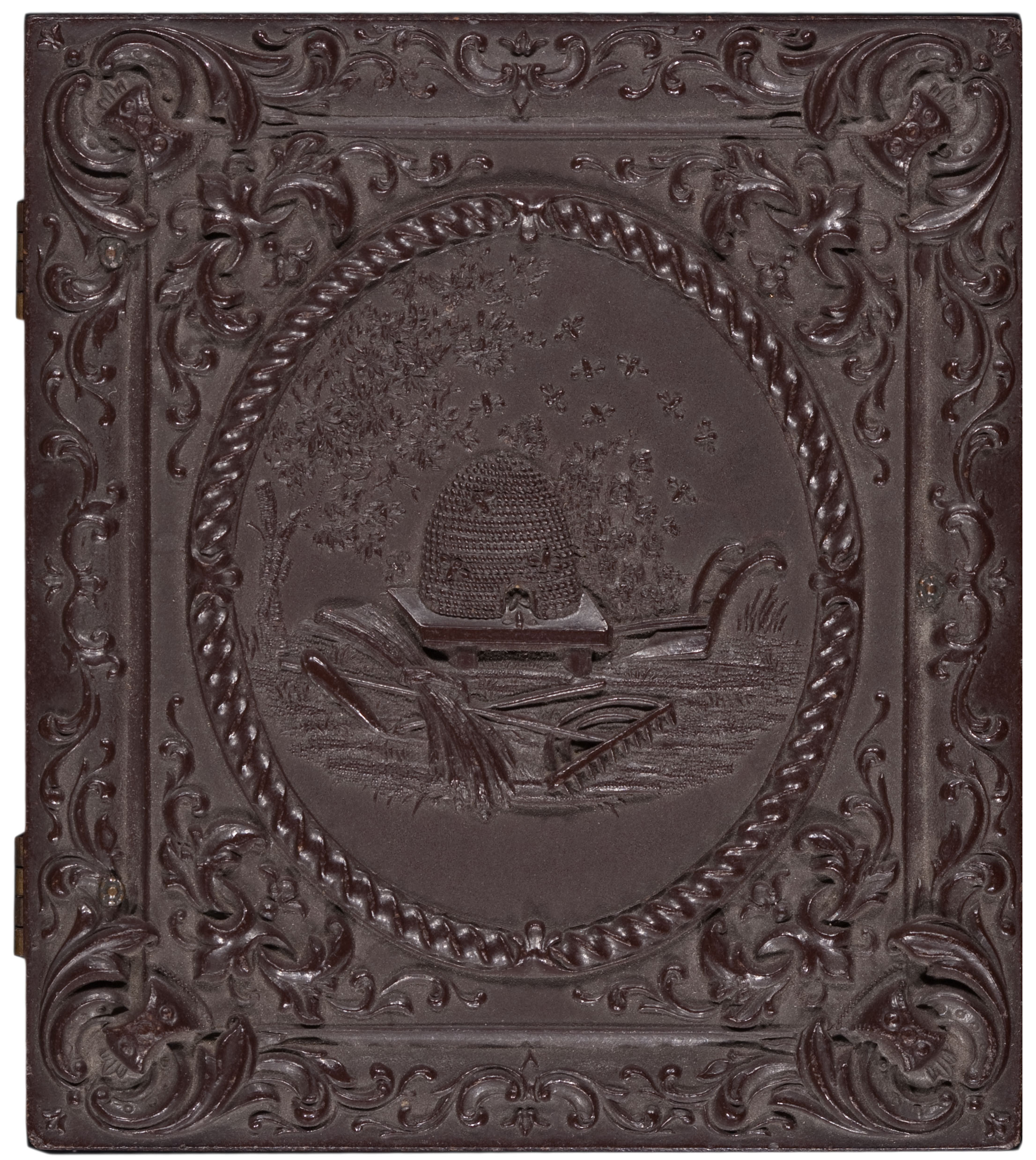
Thermoplastic, or Union Case.
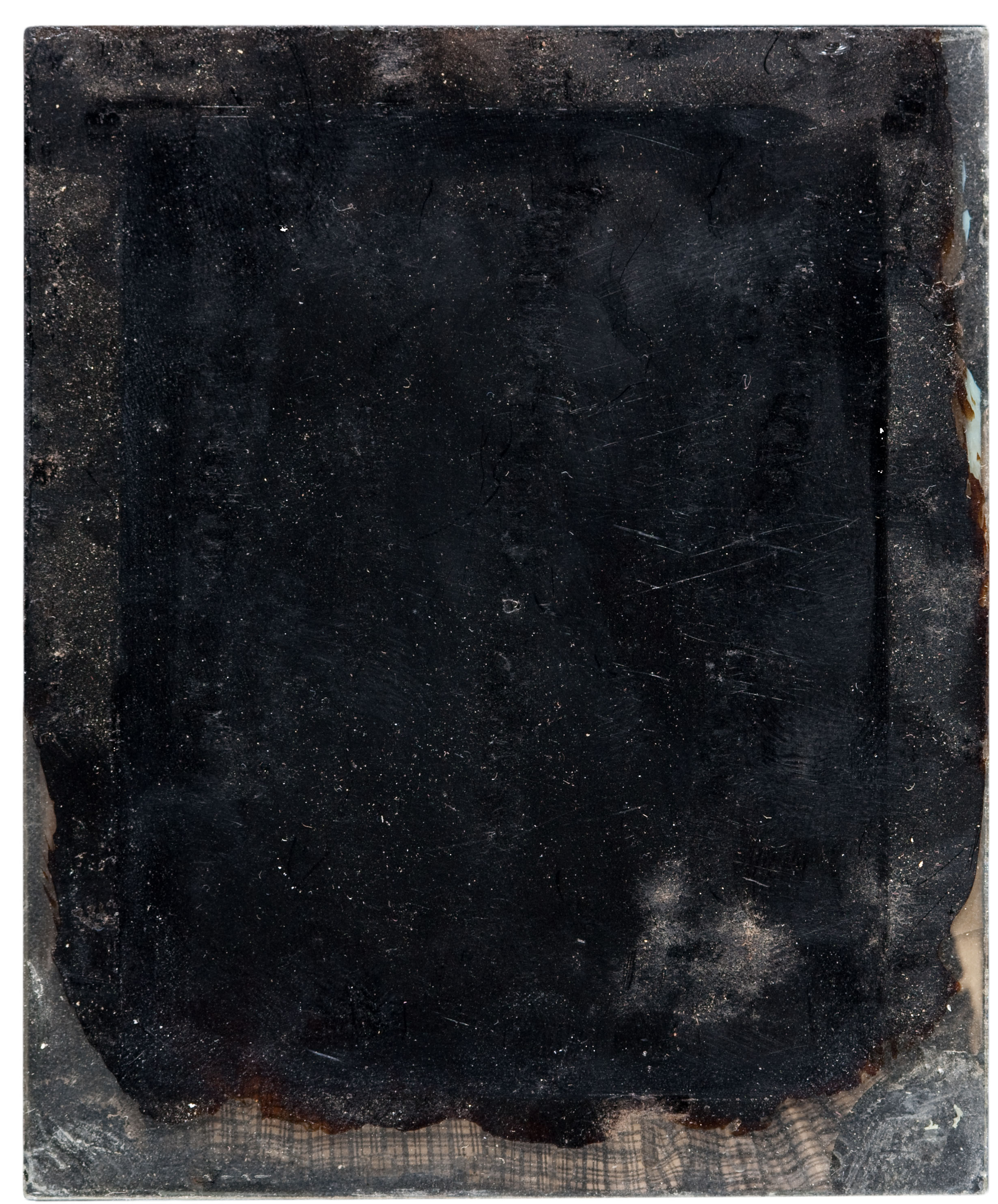
Black lacquer applied to the glass side of the plate.
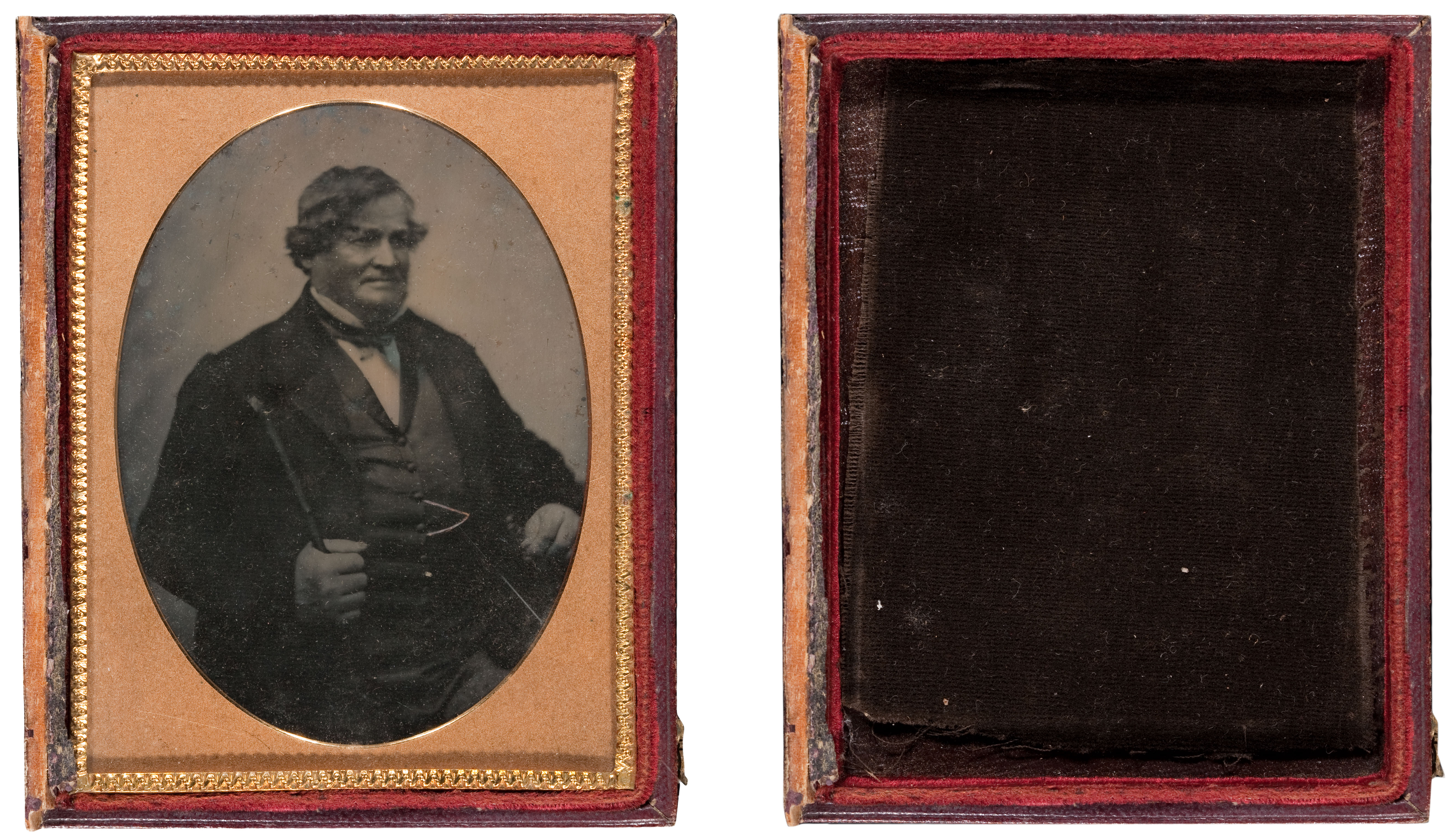
Dark cloth was placed behind this image to make it appear positive. The same object with the plate removed from the case is shown on the right. Dark velvet cloth is lining the case tray.
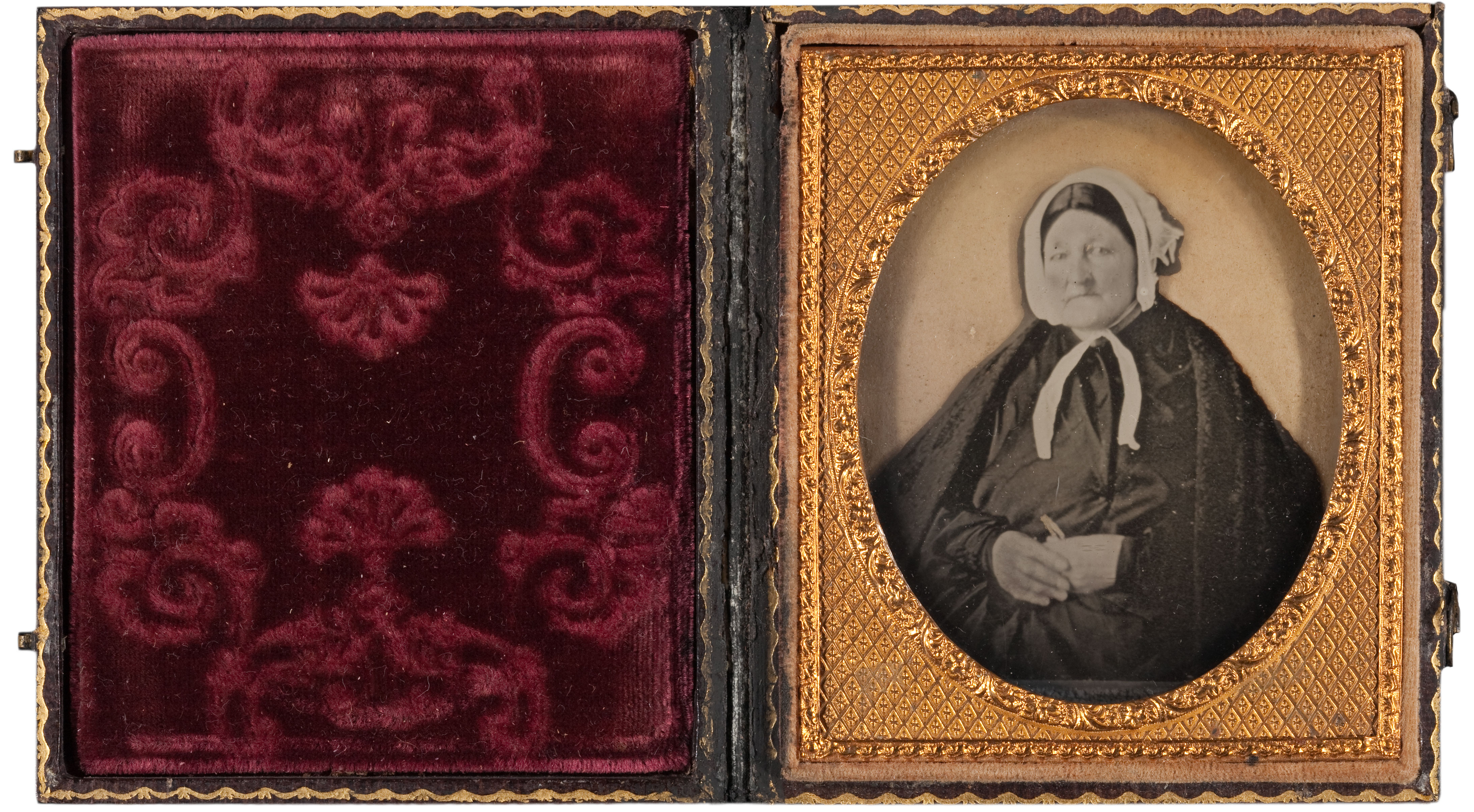
This is an example of a relievo ambrotype.

Color was commonly applied to the sitter’s lips, cheeks and jewelry.
Occasionally, information may be written on a piece of paper and placed inside the case along with the ambrotype. Though rare, objects such as other photographs or locks of hair can sometimes be found inside the case as well.
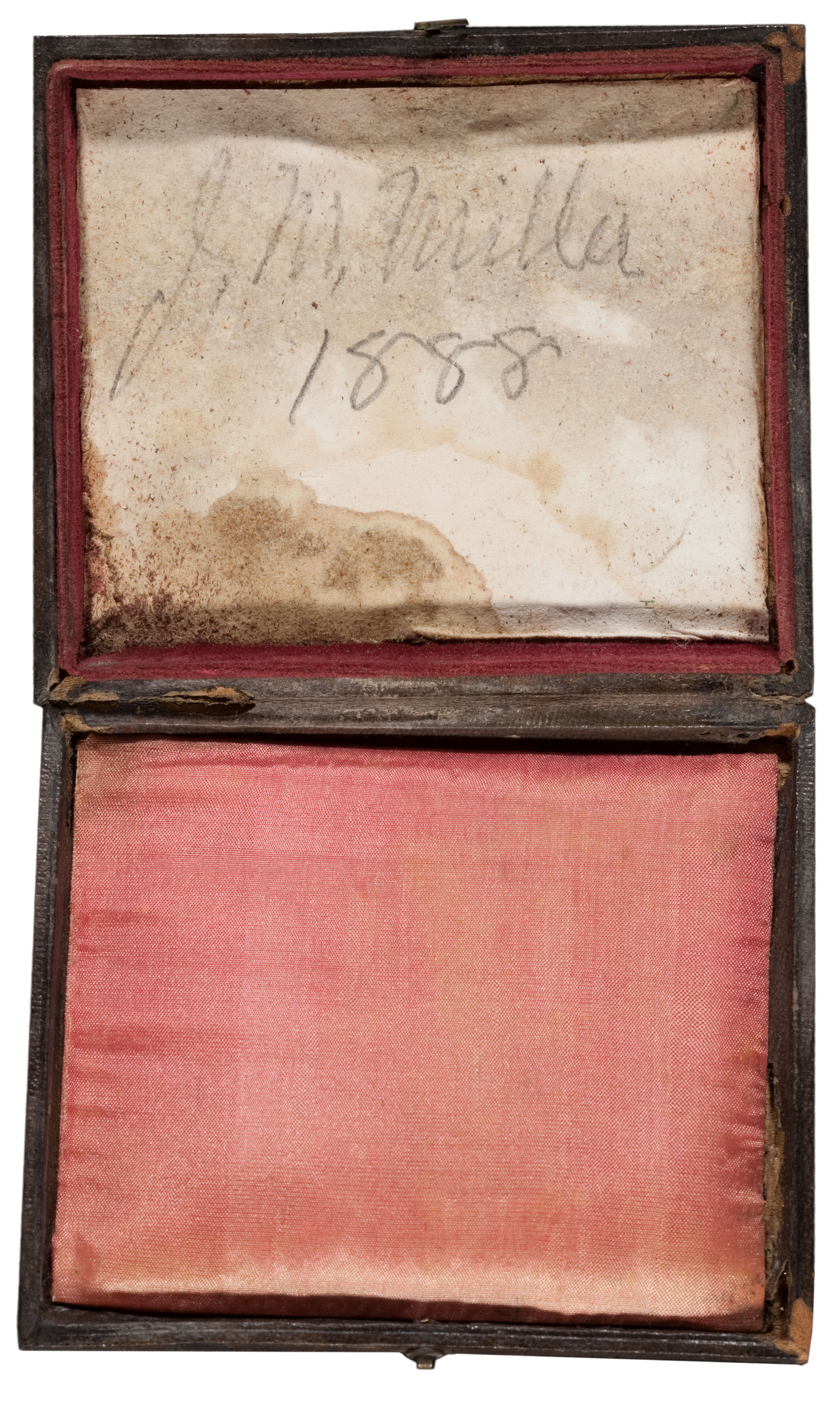
The date and sitter’s name are written on the inside of this case.